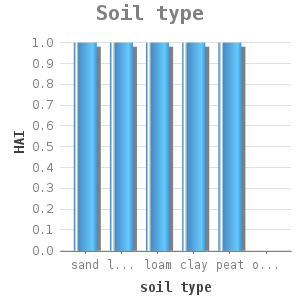H2170 - Dunes with Salix repens ssp argentea (Salicion arenariae)
General
General characteristics |
|
|---|---|
Common name |
Dunes with Salix repens ssp argentea (Salicion arenariae) |
Region |
Europe |
Water system |
coastal waters |
Nature parameter |
Habitat types |
HR nr |
H2170 |
Fact sheet by |
K.E. van de Wolfshaar |
Description habitat
Occurrence
This habitat type comprises dunes slacks marked with dominance of Creeping willow (Salix repens). In The Netherlands, it concerns Creeping willow of the Empetrion nigri and Salicion cinereae class. We do not distinguish the classification Salicion arenariae.
In humid slacks with little sand movement, covering can develop belonging to the class Pyrolo-Salicetum of the association Empetrion nigri. Besides Creeping willow, specific plants for this community are Round-leaved wintergreen (_Pyrola rotundifolia), Snowline wintergreen (Pyrola minor) and the rare Dutchman's pipe (Monotropa hypopitys). This habitat type variant often creates mosaics with species-rich dune slack vegetation (vegetation type H2190 – Humid dune slacks). The dunes with Salix often replace humid dune slacks in the succession process.
The second variant of this habitat type can be found in humid dune slacks where Creeping willow and Grey willow (Salix cinerea) tend to grow most vigorously. This vegetation belongs to the sub association salicetosum repentis of the class Salicetum cinereae (class Salicion cinereae).
Environmental boundary conditions
This habitat type is mostly found in the dune lands with a lime deficiency north of Bergen (especially in the Wadden Sea Islands and in the Zwanenwater). A less well-developed type can be found in the more southern dune areas of The Netherlands.
Control and growth opportunities
This habitat type is very sensitive to acidification #1.
Dose-effect relations
This habitat type itself is a landscape characteristic. Therefore, these dose-effect relations have been based on habitat factors of occurring plant communities.
Flowchart
Dose-effect relations
Uncertainty and validation
These dose-effect relations have not been validated.
Applicability
These dose-effect relations have been based on habitat factors of occurring plant communities. As this habitat type itself is a landscape characteristic, it is difficult to define relations.
Example project
At present, there is no example of a project available.
References
1 http://www.minlnv.nl/natura2000
2 Schaminée, J.H.J., Weeda, E.J. en Westhoff, V.. De vegetatie van Nederland. Deel 3. Graslanden - zomen en droge heiden. Opulus Press, Uppsala-Leiden. 1998.
3 http://www.soortenbank.nl/
